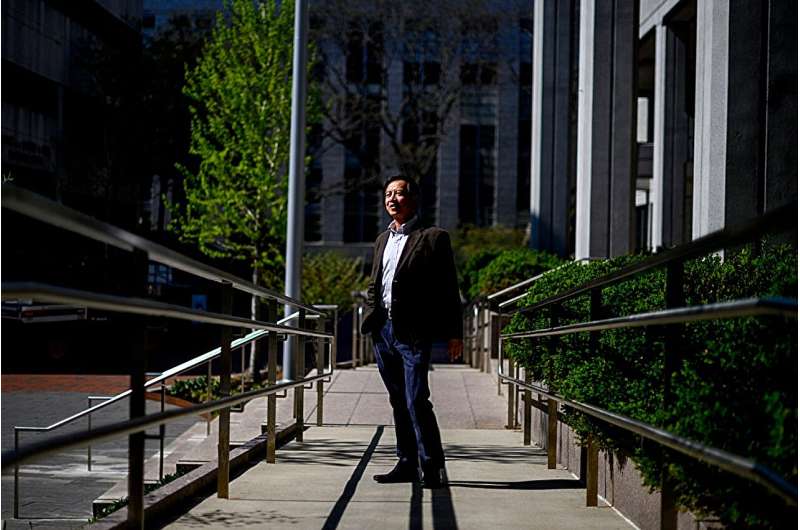
It sounds like a tall order: build a floating pier off war-torn Gaza that will allow the delivery of 2 million daily meals to residents. And do it in two months.
Qin Jim Chen, a professor of civil and environmental engineering and marine and environmental sciences at Northeastern University, says the plan is possible and now is a good time to do it.
"From an engineering point of view it's doable. It can be implemented," Chen says. "Of course there are challenges—but this is probably a good plan in terms of time."
President Joe Biden announced in his State of the Union speech that the U.S. Army would build a temporary pier off Gaza from which to deliver humanitarian aid to Palestinians trapped in the five-month Israel-Hamas war.
The Army subsequently detailed that the pier would float, allowing ships to deliver aid that would then be loaded onto Navy support vessels and offloaded onto a 1,800-foot-long, two-lane causeway connecting to land. Trucks could then access the causeway to pick up and haul the aid.
Chen says that the mission presents several engineering challenges, but none that are insurmountable.
First, the structure must be capable of withstanding the waves and tides of the eastern Mediterranean—both flexible enough to adjust to the water dynamics and strong enough to hold trucks unloading aid.
"Wave action can get them loose," Chen says. "But you also don't want a rigid platform."
Chen says pontoons—or platforms kept afloat by massive buoyant tubes and held in place by an anchor system on the seafloor—are the answer.
He says to think about the floating pier and the causeway as massive strings of pontoons. The pier will be much wider than the causeway to enable the aid to be unloaded, but the causeway will be longer and will connect to the beach.
Chen says the Army has previously constructed such a pier in Australia. He also notes that the waves in that area of the Mediterranean are relatively small compared with waves we see on the Atlantic seaboard, and are diminished during the spring and summer. Tides, meanwhile, along Gaza are about 1.5 feet to 2 feet—"about 10 times smaller than we see here," Chen says.
On a good note, a beach is much easier to land on than a rocky cliff, for instance. The beach is also relatively narrow and alongside a road, which helps distribution of the aid, Chen says.
On the other hand, the beach is dynamic.
"It can be a challenge, because a beach is changing every minute—it's not like a fixed structure," Chen says.
As for Biden's promise that U.S. troops would not be on land but only on the causeway and ships, Chen says the Army can rely on its allies to connect the causeway to the beach.
"Those are all technical issues that can be overcome," Chen says. "I'm confident that they can accomplish that in the timeframe they are planning, if the weather cooperates."
That being said, unloading the aid and distributing it are two different challenges.
"It's not just the technical challenges of the pier, but the logistics of the distributions," Chen says. "They can have some real issues once they get to the beach."
This story is republished courtesy of Northeastern Global News news.northeastern.edu.
Citation: How the US Army will build a floating pier to deliver humanitarian aid to war-torn Gaza (2024, March 13) retrieved 13 March 2024 from https://techxplore.com/news/2024-03-army-pier-humanitarian-aid-war.html
This document is subject to copyright. Apart from any fair dealing for the purpose of private study or research, no part may be reproduced without the written permission. The content is provided for information purposes only.
